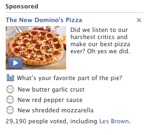
Take a break for the holidays!
The holiday season may seem a little less jolly for some of us this year. Stress levels are high and there are plenty of reasons to feel a bit like a scrooge — lousy economy, job pressures, family needs, etc. It doesn’t help that we’re constantly receiving or sending electronic communications every minute of every day — emails, text messages, blogs, Twitter and Facebook, to name a few.
It’s a good time to remember to take a break. Unplug — and unwind — this holiday season. Here are some tips:
Get out. Take a walk. Take your children to the park.
Reconnect. Visit a friend. Call someone you haven’t seen for years.
Be a kid again. Grab a board game. Play tag or hide and seek with your children.
Be creative. Draw or paint a picture. Learn how to knit. Take up scrapbooking.
Be old-fashioned. Write a poem, a love letter or a thank-you note.
Learn something. Read a book, newspaper or magazine.
Give back. Donate food or clothing to those in need. Volunteer at a local nonprofit.
Test your culinary skills. Bake, grill, sauté, roast. Try a new recipe.
Dance to the music. Put on your favorite CD. Play an instrument. Go to a concert.
But most of all, enjoy yourself. And reconnect with family and friends. Happy holidays!

























